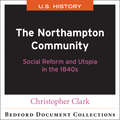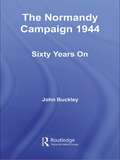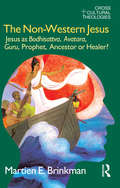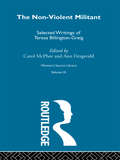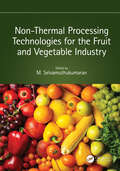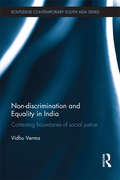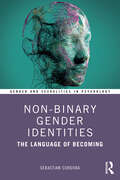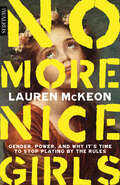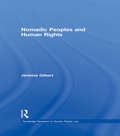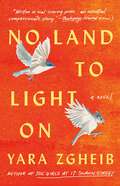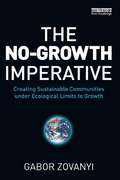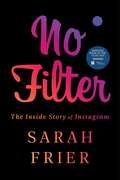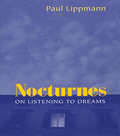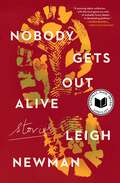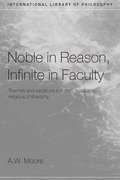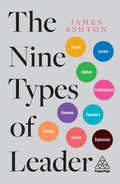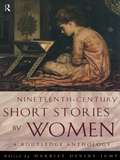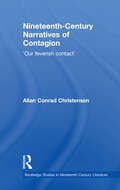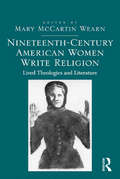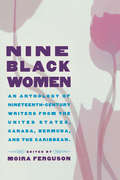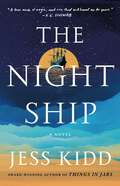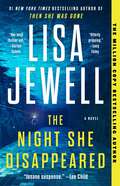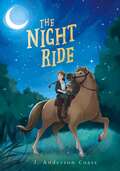Special Collections
Benetech’s Global Certified Accessible Titles
Description: Benetech’s GCA program is the first independent third-party EPUB certification to verify ebook accessibility. By creating content that is born accessible, publishers can meet the needs of all readers. Learn more: https://bornaccessible.benetech.org/
- Table View
- List View
The Northampton Community
by Bedford/St.Martin's and Christopher ClarkThis document collection offers insights into the aspirations, life, and practical aspects of an American utopian community of the 1840s. Students will engage with a wide range of primary sources, constructing an argument based on the central question: What does the Northampton Community’s example reveal about the goals and experiences of American utopian communities in the 1840s? Students are guided in their analyses of the documents by a learning objective, central question, historical background, source headnotes, source questions, project questions and suggestions for further research. Through their work with these sources, they will gain a deeper awareness of the diversity of the American experience, a more complete understanding of the present in an historically-based context, an enhanced ability to read, interpret, assess, and contextualize primary sources, and practice explaining historical change over time.
The Normandy Campaign 1944
by John BuckleyWith essays from leading names in military history, this new book re-examines the crucial issues and debates of the D-Day campaign. It tackles a range of core topics, placing them in their current historiographical context, to present new and sometimes revisionist interpretations of key issues, such as the image of the Allied armies compared with the Germans, the role of air power, and the lessons learned by the military from their operations. As the Second World War is increasingly becoming a field of revisionism, this book sits squarely within growing debates, shedding new light on topics and bringing current thinking from our leading military and strategic historians to a wider audience. This book will be of great interest to students of the Second World War, and of military and strategic studies in general.
The Nordic World: Sport in Society
by J. A. ManganThis volume is a significant contribution to the study of contemporary European culture. It explores the political, social and aesthetic impact of modern sport on the Northern European Nordic communities. Its concern is the relationship between Nordic culture, Nordic nations, changing Nordic attitudes to time, space and the body and the related evolution of specific Nordic visions and traditions of sport as an integral component of cultural similarity and synthesis.
The Non-Western Jesus
by M. E. Brinkman and Henry Jansen and Lucy JansenThe centre of gravity of contemporary Christianity has shifted to the southern hemisphere where, with the exception of Latin America, almost all Christians are minorities in their home countries. Christians in Asia live amongst Muslim, Hindu, Buddhist, Shamanist or Taoist majorities and this context shapes the local Christian theology. The same is true in Africa where traditional religions and beliefs influence African Christians. Central to this change in both Africa and Asia is the creation of a new Jesus, one who accretes local beliefs and concerns and who, in that process, is transformed. 'The Non-Western Jesus' reveals how a new theology - with its own images and concepts - is coming into being. A wide range of embodiments of Jesus is examined: Jesus as 'Avatara' and 'Guru' in the Indian context; as 'Bodhisattva' in the Buddhist context; and Jesus within Asian, Chinese, Japanese, Korean, African and Indonesian religious contexts.
The Non-Violent Militant
by Ann Fitzgerald and Carol McPheeFirst published in 1987. This volume collects together writings of Teresa Billington-Greig, suffragette, activist and political theorist. One of the first organizers for the Women's Social and Political Union, she was a founder-member of the Women's freedom League. She was also the first suffragette to be sent to Holloway Gaol. This volume provides new insights into this exceptional women's lifelong efforts in the woman's movement
Non-Thermal Processing Technologies for the Fruit and Vegetable Industry
by M. SelvamuthukumaranFruits and vegetables rapidly spoil due to growth of microorganisms, which further render them unsafe for human consumption. The traditional methods of food preservation, which involves drying, canning, salting, curing, and chemical preservation, can significantly affect food quality by diminishing nutrients during heat processing. This can alter the texture of the products, leave chemical residues in the final processed products, which in turn has greater impact over consumers' safety and health concerns. To combat this problem, various current non-thermal food processing techniques can be employed in fruit and vegetable processing industries to enhance consumer satisfaction for delivering wholesome food products to the market, thus increasing demand. Non-Thermal Processing Technologies for the Fruit and Vegetable Industry introduces the various non-thermal food processing techniques especially employed for fruits and vegetables processing industries; it deals with the effect of several non-thermal processing techniques on quality aspects of processed fruits and vegetable products and keeping quality and consumer acceptability. Key Features: Describes the high-pressure processing techniques employed for processing fruit and vegetable based beverages Discusses the safety aspects of using various innovative non-thermal based technologies for the fruits and vegetables processing industries. Explains ozone application, cold plasma, ultrasound and UV irradiation for fruits and vegetables with their advantages, disadvantages, process operations, mechanism for microbes in activation etc. Presents the commercially viable and economically feasible non-thermal processing technologies for fruit and vegetable industry. This book addresses professors, scientists, food engineers, research scholars, students and industrial personnel for stability enhancement of fruit- and vegetable-based food products by using novel non-thermal food processing techniques. Readers will come to know the current and emerging trends in use of non-thermal processing techniques for its application in several fruit- and vegetable-based food processing industries.
Non-discrimination and Equality in India
by Vidhu VermaSocial Justice is a concept familiar to most Indians but one whose meaning is not always understood as it signifies a variety of government strategies designed to enhance opportunities for underprivileged groups. By tracing the trajectory of social justice from the colonial period to the present, this book examines how it informs ideas, practices and debates on discrimination and disadvantage today. After outlining the historical context for reservations for scheduled castes and scheduled tribes that began under British colonial rule, the book examines the legal and moral strands of demands raised by newer groups since 1990. In addition the book shows how the development of quota policies has been significantly influenced by the nature and operation of democracy in India. It describes the recent proliferation of quota demands for reservations in higher education, private sector and for women and religious minorities in legislative assemblies. The book goes on to argue that while proliferation of demands address unequal incidence of poverty, deprivation and inequalities across social groups and communities, care has to be taken to ensure that existing justifications for quotas for discriminated groups due to caste hierarchies are not undermined. Providing a rich historical background to the subject, the book is a useful contribution to the study on the evolution of multiple conceptions of social justice in contemporary India.
Non-Binary Gender Identities
by Sebastian CordobaNon-Binary Gender Identities examines how non-binary people discover, adopt, and negotiate language in a variety of social settings, both offline and online. It considers how language, in the form of gender-neutral pronouns, names, and labels, is a central aspect of identity for many and has been the subject of much debate in recent years. Cordoba captures the psychological, social, and linguistic experiences of non-binary people by illustrating the multiple, complex, and evolving ways in which non-binary people use language to express their gender identities, bodies, authenticity, and navigate social interactions – especially those where their identities are not affirmed. These findings shed light on the gender and linguistic becomings of non-binary people, a pioneering theoretical framework developed in the book, which reflects the dynamic realities of language, subjectivities, and the materiality of the body. Informed by these findings, the text offers recommendations for policy makers and practitioners, designed to facilitate gender-related communication and decrease language-related distress on non-binary people, as well as the general population. This important book advances our understanding of non-binary gender identities by employing innovative methodologies – including corpus-based research and network visualisation – furthering and developing theory, and yielding original insights. It is essential reading for students and academics in social psychology and gender studies, as well as anyone interested in furthering their understanding of non-binary gender identities.
No More Nice Girls
by Lauren McKeonA groundbreaking, insightful book about women and power from award-winning journalist Lauren McKeon, which shows how women are disrupting the standard (very male) vision of power, ditching convention, and building a more equitable world for everyone. In the age of girl bosses, Beyoncé, and Black Widow, we like to tell our little girls they can be anything they want when they grow up, except they’ll have to work twice as hard, be told to “play nice,” and face countless double standards that curb their personal, political, and economic power. Women today remain a surprisingly, depressingly long way from gender and racial equality. It’s worth asking: Why do we keep playing a game we were never meant to win?Award-winning journalist and author of F-Bomb: Dispatches from the War on Feminism, Lauren McKeon examines the many ways in which our institutions are designed to keep women and other marginalized genders at a disadvantage. In doing so, she reveals why we need more than parity, visible diversity, and lone female CEOs to change this power game. She talks to people doing power differently in a variety of sectors and uncovers new models of power. And as the toxic, divisive, and hyper-masculine style of leadership gains ground, she underscores why it’s time to stop playing by the rules of a rigged game.
Nominalism and Constructivism in Seventeenth-Century Mathematical Philosophy
by David SepkoskiWhat was the basis for the adoption of mathematics as the primary mode of discourse for describing natural events by a large segment of the philosophical community in the seventeenth century? In answering this question, this book demonstrates that a significant group of philosophers shared the belief that there is no necessary correspondence between external reality and objects of human understanding, which they held to include the objects of mathematical and linguistic discourse. The result is a scholarly reliable, but accessible, account of the role of mathematics in the works of (amongst others) Galileo, Kepler, Descartes, Newton, Leibniz, and Berkeley. This impressive volume will benefit scholars interested in the history of philosophy, mathematical philosophy and the history of mathematics.
Nomadic Peoples and Human Rights
by Jérémie GilbertAlthough nomadic peoples are scattered worldwide and have highly heterogeneous lifestyles, they face similar threats to their mobile livelihood and survival. Commonly, nomadic peoples are facing pressure from the predominant sedentary world over mobility, land rights, water resources, access to natural resources, and migration routes. Adding to these traditional problems, rapid growth in the extractive industry and the need for the exploitation of the natural resources are putting new strains on nomadic lifestyles.
This book provides an innovative rights-based approach to the issue of nomadism looking at issues including discrimination, persecution, freedom of movement, land rights, cultural and political rights, and effective management of natural resources. Jeremie Gilbert analyses the extent to which human rights law is able to provide protection for nomadic peoples to perpetuate their own way of life and culture. The book questions whether the current human rights regime is able to protect nomadic peoples, and highlights the lacuna that currently exists in international human rights law in relation to nomadic peoples. It goes on to propose avenues for the development of specific rights for nomadic peoples, offering a new reading on freedom of movement, land rights and development in the context of nomadism.
No Land to Light On
by Yara ZgheibExit West meets An American Marriage in this breathtaking and evocative novel about a young Syrian couple in the throes of new love, on the cusp of their bright future…when a travel ban rips them apart on the eve of their son&’s birth—from the author of the &“absorbing page-turner&” (People) The Girls at 17 Swann Street. Hadi and Sama are a young Syrian couple flying high on a whirlwind love, dreaming up a life in the country that brought them together. She had come to Boston years before chasing dreams of a bigger life; he&’d landed there as a sponsored refugee from a bloody civil war. Now, they are giddily awaiting the birth of their son, a boy whose native language would be freedom and belonging. When Sama is five months pregnant, Hadi&’s father dies suddenly in Jordan, the night before his visa appointment at the embassy. Hadi flies back for the funeral, promising his wife that he&’ll only be gone for a few days. On the day his flight is due to arrive in Boston, Sama is waiting for him at the airport, eager to bring him back home. But as the minutes and then hours pass, she continues to wait, unaware that Hadi has been stopped at the border and detained for questioning, trapped in a timeless, nightmarish limbo. Worlds apart, suspended between hope and disillusion as hours become days become weeks, Sama and Hadi yearn for a way back to each other, and to the life they&’d dreamed up together. But does that life exist anymore, or was it only an illusion? Achingly intimate yet poignantly universal, No Land to Light On is the story of a family caught up in forces beyond their control, fighting for the freedom and home they found in one another.
The No-Growth Imperative
by Gabor ZovanyiMore than two decades of mounting evidence confirms that the existing scale of the human enterprise has surpassed global ecological limits to growth. Based on such limits, The No-Growth Imperative discounts current efforts to maintain growth through eco-efficiency initiatives and smart-growth programs, and argues that growth is inherently unsustainable and that the true nature of the challenge confronting us now is one of replacing the current growth imperative with a no-growth imperative. Gabor Zovanyi asserts that anything less than stopping growth would merely slow today’s dramatic degradation and destruction of ecosystems and their critical life-support services. Zovanyi makes the case that local communities must take action to stop their unsustainable demographic, economic, and urban increases, as an essential prerequisite to the realization of sustainable states. The book presents rationales and legally defensible strategies for stopping growth in local jurisdictions, and portrays the viability of no-growth communities by outlining their likely economic, social, political, and physical features. It will serve as a resource for those interested in shifting the focus of planning from growth accommodation to the creation of stable, sustainable communities. While conceding the challenges associated with transforming communities into no-growth entities, Zovanyi concludes by presenting evidence that suggests that prospects for realizing states of no growth are greater than might be assumed.
No Filter
by Sarah FrierWinner of the 2020 Financial Times and McKinsey Business Book of the Year Award * Finalist for SABEW'S Inaugural Best in Business Book Award In this &“sequel to The Social Network&” (The New York Times), award-winning reporter Sarah Frier reveals the never-before-told story of how Instagram became the most culturally defining app of the decade.&“The most enrapturing book about Silicon Valley drama since Hatching Twitter&” (Fortune), No Filter &“pairs phenomenal in-depth reporting with explosive storytelling that gets to the heart of how Instagram has shaped our lives, whether you use the app or not&” (The New York Times). In 2010, Kevin Systrom and Mike Krieger released a photo-sharing app called Instagram, with one simple but irresistible feature: it would make anything you captured look more beautiful. The cofounders cultivated a community of photographers and artisans around the app, and it quickly went mainstream. In less than two years, it caught Facebook&’s attention: Mark Zuckerberg bought the company for a historic $1 billion when Instagram had only thirteen employees. That might have been the end of a classic success story. But the cofounders stayed on, trying to maintain Instagram&’s beauty, brand, and cachet, considering their app a separate company within the social networking giant. They urged their employees to make changes only when necessary, resisting Facebook&’s grow-at-all-costs philosophy in favor of a strategy that highlighted creativity and celebrity. Just as Instagram was about to reach a billion users, Facebook&’s CEO Mark Zuckerberg—once supportive of the founders&’ autonomy—began to feel threatened by Instagram&’s success. Frier draws on unprecedented access—from the founders of Instagram, as well as employees, executives, and competitors; Anna Wintour of Vogue; Kris Jenner of the Kardashian-Jenner empire; and a plethora of influencers worldwide—to show how Instagram has fundamentally changed the way we show, eat, travel, and communicate, all while fighting to preserve the values which contributed to the company&’s success. &“Deeply reported and beautifully written&” (Nick Bilton, Vanity Fair), No Filter examines how Instagram&’s dominance acts as lens into our society today, highlighting our fraught relationship with technology, our desire for perfection, and the battle within tech for its most valuable commodity: our attention.
Nocturnes
by Paul LippmannNocturnes, literally music for the night, is a delightfully impressionistic investigation into everything that is not known, and perhaps can never be known, about dreams. Rather than espousing yet another strategy of dream interpretation, Lippmann proffers a naturalistic approach appreciative of the playful, complex, even zany creativity embodied in dreams. He urges us, that is, to apprehend dreams on their own terms, in a manner that enables patients actually to experience the unconscious in its radical difference from waking thought. Lippmann delivers on his agenda lightly, with a sense of humor and practicality that will engage lay readers as well as analysts and therapists. He takes up questions of general interest that challenge us to reorient our thinking about dreams: How do children learn about dreams and their telling? Why are most dreams forgotten? How may we understand dreams about sleeping and waking, even dreams about dreaming? And he reengages issues of perennial interest to analytic therapists: dream disguise, dream forgetting, the "companionship" of dreams, the neurotic dream expert, and the therapist's management of his or her own anxiety when patients report their dreams."Oh, I had a dream last night," the patient remembers. Too often, observes Lippmann, this remark signals the beginning of an unfortunate struggle, as the patient is called on to relate something that changes when it is put into words, the analyst is put on the spot to come up with an interpretation, and both are asked to extract something immediately useful - and lately, cost effective - from something that partakes of magic and mystery. How silly this ritual is, Lippmann argues, and how alien to the nature of the dream itself. After reading Nocturnes, no clinician, from the novice to the most senior, will hear the words "Oh, I had a dream last night" in quite the same way.
Nobody Gets Out Alive
by Leigh NewmanNamed a MOST ANTICIPATED book by Vogue, Literary Hub, The Millions, Good Housekeeping, and Oprah Daily From the prizewinning, debut fiction author: an exhilarating virtuosic story collection about women navigating the wilds of male-dominated Alaskan society.
Set in Newman’s home state of Alaska, Nobody Gets Out Alive is a collection of dazzling, courageous stories about women struggling to survive not just grizzly bears and charging moose but the raw, exhausting legacy of their marriages and families. In “Howl Palace”—winner of The Paris Review’s Terry Southern Prize, a Best American Short Story, and Pushcart Prize selection—an aging widow struggles with a rogue hunting dog and the memories of her five ex-husbands while selling her house after bankruptcy.
In the title story, “Nobody Gets Out Alive,&” newly married Katrina visits her hometown of Anchorage and blows up her own wedding reception by flirting with the host and running off with an enormous mastodon tusk. Alongside stories set in today’s Last Frontier—rife with suburban sprawl, global warming, and opioid addiction—Newman delves into remote wilderness of the 1970s and 80s, bringing to life young girls and single moms in search of a wilder, freer, more adventurous America.
The final story takes place in a railroad camp in 1915, where an outspoken heiress stages an elaborate theatrical in order to seduce the wife of her husband’s employer, revealing how this masterful storyteller is “not only writing unforgettable, brilliantly complex characters, she’s somehow inventing souls” (Kimberly King Parsons, author of Black Light).
Noble in Reason, Infinite in Faculty
by A.W. MooreIn this bold and innovative new work, Adrian Moore poses the question of whether it is possible for ethical thinking to be grounded in pure reason. In order to understand and answer this question, he takes a refreshing and challenging look at Kant’s moral and religious philosophy. Identifying three Kantian Themes – morality, freedom and religion – and presenting variations on each of these themes in turn, Moore concedes that there are difficulties with the Kantian view that morality can be governed by ‘pure’ reason. He does however defend a closely related view involving a notion of reason as socially and culturally conditioned. In the course of doing this, Moore considers in detail, ideas at the heart of Kant’s thought, such as the categorical imperative, free will, evil, hope, eternal life and God. He also makes creative use of the ideas in contemporary philosophy, both within the analytic tradition and outside it, such as ‘thick’ ethical concepts, forms of life and ‘becoming those that we are’. Throughout the book, a guiding precept is that to be rational is to make sense, and that nothing is of greater value to use than making sense.
The Nine Types of Leader
by James AshtonFind out what makes great leaders tick, learn what it takes to be credible and read about the things that they'd do differently if they had to do it all again. The Nine Types of Leader introduces some obvious and some not so obvious types of leader through stories, anecdotes and insight garnered from hundreds of encounters with world-class leaders. Featuring interviews with industry titans including Jean-Francois Decaux of JC Decaux, Michael Rapino of Live Nation, Zhang Ruimin of Haier, Gavin Patterson of Salesforce and Isabelle Kocher of Engie, it explores how the leaders of tomorrow will improve their game by borrowing from the very best of the nine types of leader that exist today.Renowned journalist, James Ashton assesses the strengths and weaknesses of each leadership type, highlighting where and when they are best deployed, whilst helping you identify who you are and how you can improve performance. As the world seeks to recover from drastic disruption and uncertainty and the most acute test of leadership in living memory, it projects how future leaders can learn from what has gone before.
Nineteenth-Century Short Stories by Women
by Harriet Devine JumpThis anthology brings together twenty-eight lively and readable short stories by nineteenth-century women writers, including gothic tales to romances, detective fiction and ghost stories. Containing short fiction by well-known authors such as: * Maria Edgeworth * Mary Shelley * Elizabeth Gaskell * Margaret Oliphant Nineteenth-Century Short Stories by Women also includes: * a scholarly introduction * biographies for each of the authors * full explanatory notes and suggestions for further reading * a critical commentary, publication details and historical context * a full and wide-ranging bibliography The bibliography of resources and further reading will enable those interested in pursuing research on any author or topic to do so with ease, and a thematic index will enable teachers to select material best suited to their courses.
Nineteenth-Century Narratives of Contagion
by Allan Conrad ChristensenThis intriguing book examines the ways contagion - or disease - inform and shape a wide variety of nineteenth century texts and contexts. Christiensen dissects the cultural assumptions concerning disease, health, impurity and so on before exploring different perspectives on key themes such as plague, nursing and the hospital environment and focusing on certain key texts including Dicken's Bleak House, Gaskell's Ruth, and Zola's Le Docteur Pascal.
Nineteenth-Century American Women Write Religion
by Mary McCartin WearnNineteenth-century American women’s culture was immersed in religious experience and female authors of the era employed representations of faith to various cultural ends. Focusing primarily on non-canonical texts, this collection explores the diversity of religious discourse in nineteenth-century women’s literature. The contributors examine fiction, political writings, poetry, and memoirs by professional authors, social activists, and women of faith, including Elizabeth Stuart Phelps, Angelina and Sarah Grimké, Louisa May Alcott, Rebecca Harding Davis, Harriet E. Wilson, Sarah Piatt, Julia Ward Howe, Julia A. J. Foote, Lucy Mack Smith, Rebecca Cox Jackson, and Fanny Newell. Embracing the complexities of lived religion in women’s culture-both its repressive and its revolutionary potential-Nineteenth-Century American Women Write Religion articulates how American women writers adopted the language of religious sentiment for their own cultural, political, or spiritual ends.
Nine Black Women
by Moira FergusonFirst published in 1998. Routledge is an imprint of Taylor & Francis, an informa company.
The Night Ship
by Jess KiddBased on a true story, an epic historical novel from the award-winning author of Things in Jars that illuminates the lives of two characters: a girl shipwrecked on an island off Western Australia and, three hundred years later, a boy finding a home with his grandfather on the very same island.1629: A newly orphaned young girl named Mayken is bound for the Dutch East Indies on the Batavia, one of the greatest ships of the Dutch Golden Age. Curious and mischievous, Mayken spends the long journey going on misadventures above and below the deck, searching for a mythical monster. But the true monsters might be closer than she thinks. 1989: A lonely boy named Gil is sent to live off the coast of Western Australia among the seasonal fishing community where his late mother once resided. There, on the tiny reef-shrouded island, he discovers the story of an infamous shipwreck… With her trademark &“thrilling, mysterious, twisted, but more than anything, beautifully written&” (Graham Norton, New York Times bestselling author) storytelling, Jess Kidd weaves &“a true work of magic&” (V.E. Schwab, author of The Invisible Life of Addie LaRue) about friendship, sacrifice, brutality, and forgiveness.
The Night She Disappeared
by Lisa JewellFrom the #1 New York Times bestselling author of None of This Is True comes &“her best thriller yet&” (Harlan Coben, New York Times bestselling author) about a young couple&’s disappearance on a gorgeous summer night, and the mother who will never give up trying to find them.On a beautiful summer night in a charming English suburb, a young woman and her boyfriend disappear after partying at the massive country estate of a new college friend. One year later, a writer moves into a cottage on the edge of the woods that border the same estate. Known locally as the Dark Place, the dense forest is the writer&’s favorite place for long walks and it&’s on one such walk that she stumbles upon a mysterious note that simply reads, &“DIG HERE.&” Could this be a clue towards what has happened to the missing young couple? And what exactly is buried in this haunted ground? &“Utterly gripping with richly drawn, hugely compelling characters, this is a first-class thriller with heart&” (Lucy Foley, New York Times bestselling author) that will keep you on the edge of your seat.
The Night Ride
by J. Anderson CoatsThe Black Stallion meets Tamora Pierce in this adventure-filled middle grade novel about a young stable girl who discovers a secret that endangers her beloved horse and threatens her future.Sonnia loves horses more than anything. She works at her family&’s struggling pony ride business but dreams of the beautiful steeds in the royal stables, especially Ricochet, who she&’s been slowly saving money to buy—even though she knows people from her impoverished neighborhood are rarely so lucky. Then Ricochet is moved to the racetrack across town, and Sonnia lands a job there. Now, she can see Ricochet every day and earn enough money to buy him in no time—all while helping her family with her new wages! She even joins the junior racing cadre to train to become a jockey. But then she uncovers their secret pastime: competing in the Night Ride, a dangerous and highly illegal race in the darkest hours before dawn. Every race puts the horses at risk. Sonnia wants to protect the horses she&’s grown to care for, but she&’s only a kid from the poor side of town—considered expendable, just like the horses. If she just keeps her head down, soon she can buy Ricochet and get him out of there—and keep supporting her family. But would she be able to live with herself?
